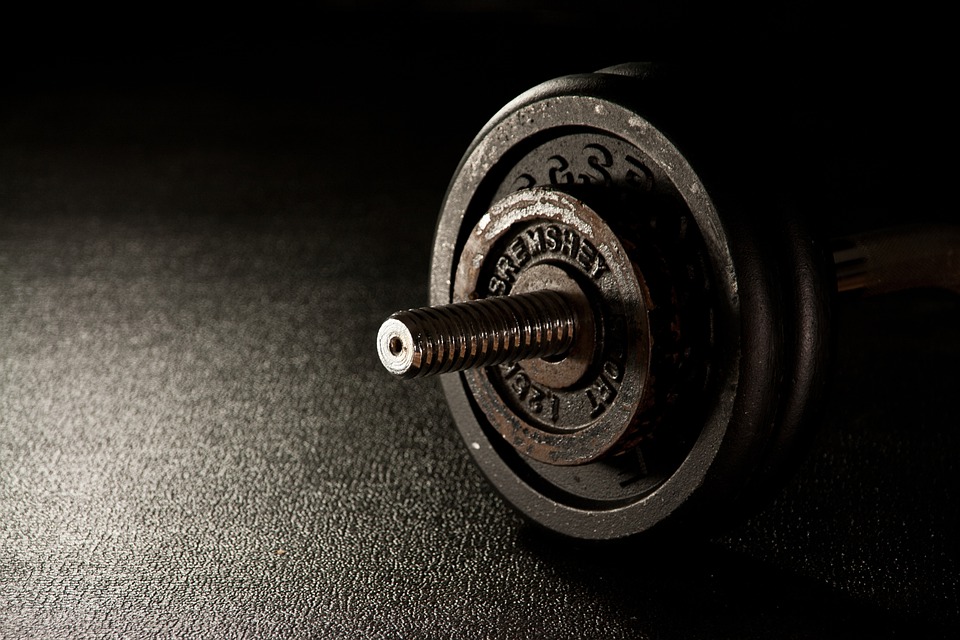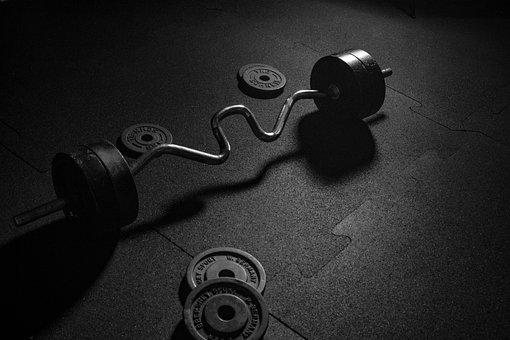
If you’re not familiar, progressive overload involves creating some form of increased, strategic effort based on the style of training you’re doing. This doesn’t mean going heavier and heavier with the weights in every set and every single workout, because sometimes, that’s not possible. Over-focusing on going heavy in every single workout, sets you up for injury and disappointment.
Progressive overload is a term used in fitness to describe the process of slowly increasing the amount of weight or resistance you’re using in your workouts over time. This is why it’s important to have a plan in place and slowly increase the difficulty of your workouts as you get stronger and more fit.
The following tips will help you build muscle in a strategic and realistic way, whether you are a beginner or someone who has reached a training plateau.
Maximize muscle building
If you’re not regularly replenishing your protein stores through your diet, your muscles can start breaking down to supply your body with the raw materials it needs. If you want your muscles to grow, you need to make sure your body is regularly replenishing its protein stores. Without a regular intake of protein, your body will start breaking down muscle to get the raw materials it needs.
If you want to build muscle, you need to “build and store new proteins faster than your body breaks down old proteins,” says Michael Houston, Ph.D., a professor of nutrition at Virginia Tech University.
You should try to get 1 gram of protein for every pound you weigh. This is roughly the maximum amount of protein your body can use in a day, according to a study in the Journal of Applied Physiology.
For example, a 160-pound man should consume approximately 160 grams of protein per day, which is the amount of protein that can be found in an 8-ounce chicken breast, 1 cup of cottage cheese, a roast-beef sandwich, two eggs, a glass of milk, and 2 ounces of peanuts. The remaining daily calories should be split equally between carbohydrates and fats.
Eat more
To gain one pound in a week, you need to take in more calories than you are currently. The following formula can help you calculate how many more you need. (Note that it may take two weeks for the results to show up on the scale. If you have not gained anything after that time, increase your calories by 500 a day.)
- Your weight in pounds: _____
- Multiply A by 12 to get your basic calorie needs: _____
- Multiply B by 1.6 to estimate your resting metabolic rate (calorie burn without factoring in exercise): _____
- Strength training: Multiply the number of minutes you lift weights per week by 5: _____
- Aerobic training: Multiply the number of minutes per week that you run, cycle, and play sports by 8: _____
- Add D and E, and divide by 7: _____
- Add C and F to get your daily calorie needs: _____
- Add 500 to G: _____. This is your estimated daily calorie needs to gain 1 pound a week.
Work big, not small
If you want to build muscle, you need to do more than just bicep curls. Multi-joint movements are key to challenging your body. Isolation training can be useful, but it shouldn’t be the focus of your training.
Do exercises that challenge multiple joints and muscles at the same time, for example a dumbbell row. This will allow you to lift more weight and stimulate growth.
This type of exercise forces you to engage multiple muscles at once, which is more representative of real-world movements. “Incorporating multi-joint moves into your routine is essential,” he explains.
Be sure to include moves like squats, deadlifts, pullups, and bench presses in your workout to get the most benefit. All of these exercises work multiple muscle groups at the same time, and in order to grow, you want to do exercises that work as many muscle groups as possible.
Train heavy
If you want to build muscle and strength, you have to train heavy, which has many benefits, says Curtis Shannon, C.S.C.S. “Training heavy challenges the muscles not only concentrically but eccentrically. If done right, the stimulus of heavyweight going down with control and going back up will cause greater muscle tear and rebuild.”
Sets of high reps can be beneficial, but for exercises like squats, bench presses, and deadlifts, you shouldn’t be afraid to do sets of lower reps (such as 5 reps). This will enable you to use more weight and build more pure strength, says Samuel. As you progress, the new strength you gain will allow you to lift heavier weights for more reps.
One approach to training for this is to start each workout with an exercise that allows you to train with low reps. Do 4 sets of 3-5 reps on your first exercise, then do 3 sets of 10-12 reps for each move after that. This allows you to “build pure strength early, then pile up reps later,” says Samuel.
Have a drink first
A 2001 study at the University of Texas found that lifters who drank a shake containing amino acids and carbohydrates before working out increased their protein synthesis more than lifters who drank the same shake after exercising.
The shake had 6 grams of amino acids, which are essential for building muscle, and 35 grams of carbohydrates.
Drinking a carbohydrate-protein mixture before working out may lead to greater uptake of amino acids in muscles, according to Kevin Tipton, Ph.D., an exercise and nutrition researcher at the University of Texas in Galveston.
Approximately 10-20 grams of protein is needed for your shake, which is equivalent to one scoop of whey-protein powder. If you do not like protein drinks, you can get the same nutrients from a sandwich made with 4 ounces of deli turkey, a slice of American cheese, and whole wheat bread. Although a drink is better, the sandwich is an adequate alternative.
According to Doug Kalman, R.D, liquid meals are absorbed faster. So, it is best to drink one 30 to 60 minutes before your workout.
Don’t always go hard
Samuel suggests that working out every day does not necessarily mean that a person should try to push themselves to their limit. He advises that people should feel good at the end of their workout, rather than exhausted. In addition, he advises that weight room workouts should be limited to 12-16 sets.
You shouldn’t work out so hard that your body is exhausted more than three times a week, with no two workouts back-to-back. Samuel says this is because you need time to recover in order to grow muscle.
Do the opposite
If you’re someone who likes things to be in order, try shaking things up by doing your exercises in the reverse order. For example, start your next leg workout with your calves, then your hamstrings, and then your quads. By changing your perspective, you may see new results.
Go totally unilateral
Temporarily working one side at a time during a workout can help to identify which limbs are weaker than others.
High rep it
If you’re stuck doing low repetitions, try doing more for a while. Keeping your repetitions in the double digits doesn’t mean that you’re going easy. Pushing a higher repetition set to failure will spur metabolism, increase testosterone and give you the desired pump.
Nothing under 10
Leg exercises are the best way to gain muscle all over your body. Full-range squats taken to failure will help you gain muscle everywhere. Unfortunately, most people don’t train their legs enough. Try doing reps with no less than 10 reps for any leg exercises and find out how effective lower body training should be.
Do one exercise
It’s great to do multiple exercises for different body parts, but if you do too many different exercises your muscles won’t grow as much. For a few weeks, try focusing on just one exercise per body part, and do 10 sets of that exercise.
Squatting three times per week is a great way to build muscle mass. Overtraining is something that is becoming less and less of a concern, so feel free to squat as often as you’d like. Legs, especially squats, are key to growing bigger and stronger.
Do every difficult exercise (and master it)
Get off your comfort zone. Anything that will improve your current condition will hurt or cause discomfort somehow. Difficult things like squats, deadlifts, clean and presses, Romanian deadlifts, and bent-over rows will help you improve if you embrace them. Get off your comfort zone and do things that will challenge you.
No isolation work
For a few weeks, stop doing isolation exercises like cable extensions, concentration curls, and lateral raises. Focus on big compound moves like benches, rows, overhead presses, squats, and deadlifts. Do a lot of reps and then stop!
Wear a watch
Monitoring your rest periods is important for gaining muscle. Wearing a watch and timing your sets can help you do this.
No phone
If I could choose, everyone would work out without their cell phone. This would not only help them to focus, but it would also create a community of people with similar interests who help each other. Did the bodybuilders of the golden era appear to be distracted or antisocial? I don’t think so.
Workout semi-fasted
Do you ever work out after eating a big meal? Did you feel tired and unable to lift as much weight as usual? All the food in your stomach has taken up a lot of blood to help with digestion. Training on an empty stomach (or only eating a very small meal an hour or two before working out) will help with hormone regulation and blood flow.
Do compound sets (for big moves)
A compound set is a set of two exercises done in succession for the same body part or group of body parts. These are usually done with smaller, single-joint moves, such as incline curls followed by standing barbell curls. You can also try compound sets with bigger exercises like barbell squats followed by leg presses.
Go machine gun
A style of training that has been around for a long time can still help you build muscle today. Try resting between sets only as long as it takes your partner to finish their set – no longer. This I-go-you-go style (sometimes called machine gun sets) is a good way to increase the pace and stop wasting time.
Cut weight, go strict
If you’re struggling to lift a weight, it may be because you’re putting too much “English” on it. This means you’re not using proper form. Try reducing the weight and relearn the proper form. This will help you get stronger.
Have a plan
If you don’t have a plan for how you want to build muscle mass, you may not see the results you want. A well-thought-out plan can help you make the most of your workout and see better results.
Double up in less time
Here’s a new challenge you may not be used to: try performing the same number of sets in half the amount of time per workout. Take shorter breaks, get in some supersets or do whatever else you need to do to just get the work done in half the time.
Super pyramid
After you complete a set of presses going up in reps, use the same weight and go back down the pyramid, like so: 1, 2, 3, 4, 6, 8, 10, 12. Sets of pyramid repetitions are a common training method for many people. Start with a higher number of repetitions and then increase the weight while decreasing the number of repetitions. Let’s take it a step further by going “super pyramid.” Instead of stopping at 8 or 6 repetitions, continue all the way down to 1. For a set of incline bench barbell presses, the repetitions could look like this: 12, 10, 8, 6, 4, 3, 2, 1. After you complete a set of presses going up in repetitions, use the same weight and go back down the pyramid.
Set a total time limit
Working out for a set amount of time rather than a set number of reps or sets is a new trend that is gaining popularity.
Set a total rep goal
If you want to set a goal for yourself, you can pick a specific number of reps to do for an exercise, or for a whole workout. This will help you focus and push yourself.
Have no plan
Do you always have a plan for your workout routine? Are you always sure about the exercises, sets, and reps you want to do? Or do you usually just do the same routines every day? Try not to plan your workout routine and just do whatever comes to mind. If you feel like doing 10 sets of bench presses, then do it. Listen to your instincts.














